A Quiet Place: The Road Ahead review
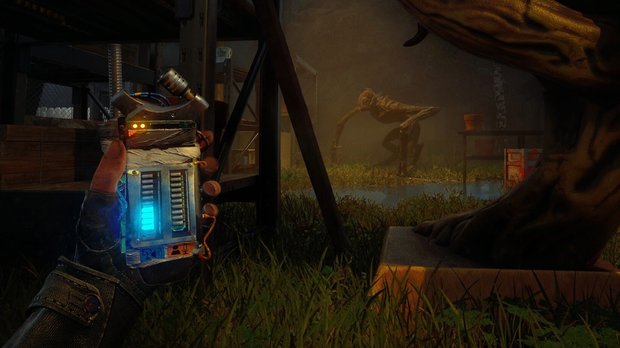
- 0 Comments
A creepy stealth horror experience but no ringing endorsement for this underwhelming movie spinoff
The 2018 horror film A Quiet Place is one of the scariest movies ever made, thanks to one little tweak that took the familiar alien invasion trope and turned the concept on its head. Instinctively you might think an attacker that has hyper-acute hearing but is nearly blind would be LESS frightening – after all, it’s easier to be silent than to stay out of sight, right? Wrong! That may be true in the short term, but just try to live your life without making any noise whatsoever. It’s impossible, and in A Quiet Place noise means death, which makes the real danger YOU. Sure, there’s a horde of terrifying, ever-vigilant reptilian-like creatures ready to pounce and eat your face at the first ill-timed scrape, thump, or crinkle, but it’s you and only you who can reveal yourself to the enemy. How can a family survive under such nightmarish conditions, especially when one of the children is deaf and the mother is pregnant and nearly ready to deliver another wailing, screaming bundle of joy?
The answer to that question is: watch it and find out for yourself, as it’s a must-view horror experience. The two subsequent sequels aren’t nearly as effective, however, largely because it’s hard to replicate the same level of fear once the novelty has worn off. Which brings us to A Quiet Place: The Road Ahead, the first game based on the franchise. A spinoff with all new characters, it naturally features many of the same challenges, plenty of suspense and a handful of jump scares as you try to avoid becoming monster fodder, and the production values are excellent throughout. Unfortunately, it doesn’t seem to have any new ideas of its own, or even much sense of how to make the best use of the ones it’s recycling. The end result feels more like a standard square-shaped survival horror experience being pounded into a round-shaped A Quiet Place hole. It’s still solidly playable, apart from a few graphical glitches and rage-inducing moments of unfairness, but it ultimately continues the franchise’s slide from fantastically frightful to just okay.
As with the first movie, The Road Ahead takes place well after the aliens have landed and decimated the planet, leaving only a few scrappy survivors. (A short tutorial and one other scene are the lone flashback exceptions.) Don’t expect to learn anything more about the invaders than the movies provide, which is the right choice. The only thing that matters is that they’re here, they’re nasty, they’re hunting, and they can hear a pin drop at fifty paces. Here you play as a college-aged student named Alex, who lives with her father, her boyfriend Martin, and Laura, his unusually hostile mother, as well as a handful of other stragglers in an old hospital. But not for long, as resources are getting scarce and it’s time to venture out.
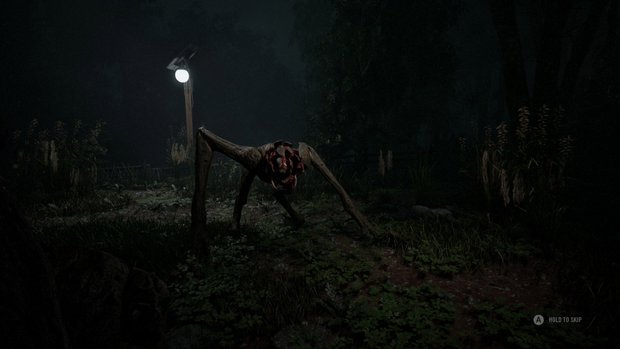
This represents the first major departure from the first movie, as things inevitably go all to hell and the rest of the game becomes a solo road trip rather than a small-group affair simply trying to carve out something resembling a “life” in this apocalyptic new reality. Then again, the way the game rather ham-handedly deals with its interpersonal human relationships, that’s probably for the best. Eventually you’ll discover the entirely unconvincing reason for Laura’s seething animosity, and it’s soon revealed (VERY soon, so not a spoiler) that Alex is pregnant. This feels more like a cheap rehash than a clever nod to the original film, and because the pregnancy is still in its early stages, it never really factors into the suspense the same way. Instead it’s used more as a plot device for some ostensibly sentimental moments that never really land. There just isn’t enough time devoted to human interaction to make us care much about the characters, and cramming in a bit of awkward conflict once in a while is no substitute.
For the most part, then, The Road Ahead is an accurate description, as Alex must keep on the move from one destination to another as her goals evolve. Although you’ll never spend much time on the road, but rather inside a collection of dreary, drab garages and warehouse-like facilities (and their many ducts), or navigating mines and dense forest trails in the pitch dark of night. This was a huge disappointment, as the game actually looks very nice the few times it’s given a chance to shine, like some panoramic views of the decimated city and its surrounding scenic countryside, or a scramble through derailed train cars during one of your rare daylight excursions. And the real question is: why? The whole point of a game where you don’t HAVE to stay hidden is that you shouldn’t need to spend all your time skulking around in the dark like a million other been-there-done-that horror games.
Granted, it makes sense that most buildings wouldn’t have power after an all-out alien assault, but it seems they really only managed to trip some circuit breakers or blow fuses, requiring you to find and do a few repairs to spark things back up again before moving on. Easier said than done in total darkness, or with only the dim red lighting of emergency warning lights or backup power sources. Of course, as prescribed in the Horror Game 101 Handbook, you have a crummy little flashlight that chews through batteries like there’s no tomorrow – which, if you don’t collect more along the way, there just might not be. Later you’ll lose access to even that and have to rely on equally depletable but noisier alternatives. At least those fit better with the franchise’s sound-based conceit.
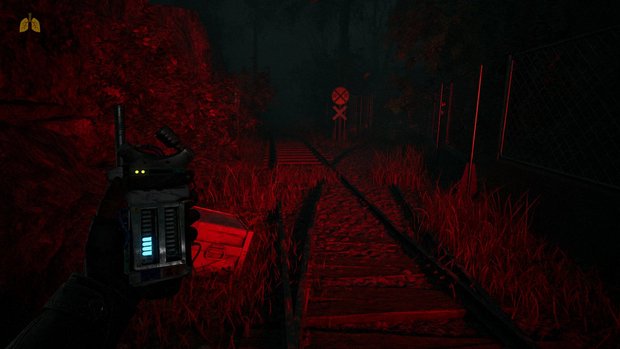
Another favourite trick of the movies is to give their protagonists a physical ailment or disability of some kind. It’s true here as well, as Alex suffers from asthma. Unlike her pregnancy, this is a condition that actually does require attention throughout, as you must also scour the environments for pills (used automatically) or disposable inhalers, which for some reason allow only a single puff each. You’ll need these a lot, as just about everything aggravates Alex’s condition: exertion, fear, dust, you name it – except, strangely, dead bodies, which elicit no reaction at all. (That's cold.) Her agitation level is indicated by a colour-coded icon of her lungs in the upper left corner, and it seemed like I was constantly on the edge of an outright attack. If that happens, a brief little timing sequence will trigger, giving you a mere a split-second to avert it or else die gasping for breath. (It’s the gasps that doom you, not suffocation.)
I’m of two minds about this feature. It’s a great idea in theory, putting the protagonist at a distinct disadvantage, but it’s accompanied by the sound of your own elevated heart rate and is SO ubiquitous that it really just feels like a stand-in for a sanity meter, which has been done and done better in other games. And it’s not like you can really help aggravating it. You must carry certain heavy items, and you have to put yourself in truly terrifying situations, particularly those that trap you in enclosed settings and leave you to evade a prowling monster that can come within inches of your “hiding” place. You don’t need to have asthma to freak out in such circumstances! So ultimately Alex’s condition becomes just another overused resource to manage, robbing it of any real distinctive benefit.
You can also keep a lookout for collectible toys, mixtapes and scattered notes and letters. The former will unlock artwork from the main menu, while the latter will sometimes offer basic clues to objectives that must be fulfilled, or else detail the drama experienced by those who left them behind. This sort of documentation works great in some exploratory games, but here it’s pretty much absurd. Not to disparage other people’s tragedies, but you’ve got troubles of your own. The last thing you’ll feel inspired to do is read through snippets of other people’s thoughts and feelings with a bloodthirsty alien stalking the same hallways where you find them. Ditto for reading through Alex’s diary, updated periodically with short entries and sketches.
The real heart of A Quiet Place is sound, and in this critical area The Road Ahead mostly succeeds. It supports keyboard/mouse controls to freely move about in first person, but a gamepad gives you more analog control over your speed of movement, which consists of slow, slower, and if-I-were-going-any-slower-I’d-be-going backwards. There IS a run option, which you’ll need precisely once for an unavoidable chase sequence, but for the most part anything faster than an agonizing crawl means alerting the nearest alien and invariably an up-close-and-personal death. Another helpful on-screen icon will indicate when you’ve shifted to a faster or slower speed, which is good because the experimental “phonometer” you’ve built to track sound levels is practically useless. It works just fine, but since you can only hold one thing in your hand, the times you’ll need it most are when you’re already clutching your crappy flashlight.

Louder environmental sounds are supposed to help mask your own, but this too ends up being a wasted element. Yes, you’re safe for a moment under a waterfall or beside a noisy machine, but then it’s time to go and your loudest footfall will be heard once again, so it’s back to creep-creep-creeping along. The only times you’re ever really protected is in designated safe rooms, but there’s really nothing to do in them that would make noise anyway. Other frustrations exist as well. Eventually you’re given the ability to move certain highlighted objects out of your way, and later to pick up bricks or bottles to throw as distractions, but never once are you allowed to move a simple tin can out of your path. Since there are many of them scattered about, playing a game of “kick the can” has inevitably fatal consequences.
It’s too bad the game fumbles its opportunities for greatness, because it does nail the core stealth action pretty well. The alien creatures are suitably horrific, and your first face-to-flowering-face with one will scar you enough to never want it to happen again. (Spoiler: It will. Probably many times.) It’s scary enough just listening to them grunt and growl and chitter in the darkness, out of sight yet anything but out of mind. And every door in existence is in need of some WD-40, so if you think you have to WALK slow, that’s nothing compared to how slowly you need to motion-control a door open without a betraying squeak. It’s overdone, but it’s times like these when the game is at its most A Quiet Place, as you’ll cringe at the barest hints of sound you’re making, holding your own breath to make sure you don’t make any more.
As well as how fast you sneak, you’ll also need to be mindful of the surfaces you traverse. Soft ground and concrete are your friends; gravel, dry leaves or broken glass, sayonara. One clever addition is bags of sand that you can spread to dull the sound of your footsteps. Strangely, despite being the heaviest and dustiest things you carry, I didn’t notice Alex’s asthma particularly affected by it. She WILL grow tired from carrying planks to create a series of bridges over highlighted gaps, which isn’t much of a puzzle but will at least challenge you to think about how to proceed. In fact, there really isn’t much puzzling to be done at all, other than a couple of lock codes to be cracked (one of them optional) and a particularly annoying sequence of finding and using valves to raise and lower water levels in a pump station. Nothing wrong with the task itself, just a matter of how long it will take to navigate its maze-like rooms in the pitch black with a monster constantly lurking right nearby.
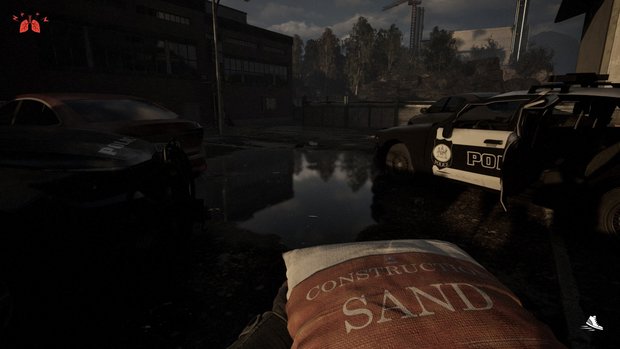
Hotspots are highlighted once you draw close enough, but there aren’t that many of them anyway. There is an inventory of sorts, or rather two of them – one for tools and another for consumables – which is cumbersome at best. But other than keys there are no items needed to solve puzzles, and even those are used automatically. Anything bigger you’ll carry by hand (tiring Alex out) until you drop them or use them in the appropriate place. As you might imagine for a game this slow, there’s no real need for quick reflexes or dexterity, as any jumps and climbs are handled automatically via short cinematics. You’ll need to do the odd button mash and there’s a little quick time event introduced to disable traps, but it isn’t very hard and as with other new gameplay elements introduced, it’s used a lot at the time and then rarely again after that.
For obvious reasons, there’s not much music playing throughout, but there are a few musical stings that will be sure to send a chill down your spine. They don’t necessarily mean imminent danger, but they do mean your stalker is on higher alert. Deliciously creepy stuff. Less creepy and more aggravating is that the game can be selective in its punishment. Throw a brick through a window to advance because the game requires it and a monster will arrive in the general vicinity moments later, unaware of your exact position. But splash just a teensy bit too loudly in a puddle and you could be dead meat, even through a closed door. The worst part of any horror game or film is when it breaks its own rules, and while The Road Ahead doesn’t do it often, it does do it occasionally. It wouldn’t be so bad if the checkpoint system was a little more generous, but save points can be rather punishingly far apart for a game that moves as slowly as this one.
Unlike in some survival horror games, you don’t have any sort of weapon here. Not only would a mere gun not be enough to defend yourself against creatures this large and tough and agile, but the sound would attract still more to finish the job anyway. The lone exception is an an adrenaline-pumping on-rails flashback sequence that is the opposite of everything else the game represents. It’s completely out of place, and yet a really welcome change of pace. The experience is so samey otherwise that anything that mixes up the formula a bit is like a breath of fresh inhaler.
For those who’d rather just “enjoy” the pants-wetting experience without all the death and dismemberment, there are different difficulty levels and accessibility options to choose from. These mostly determine the number of resources to find and the degree of alien alertness, but will also determine how much help the game provides in reaching your next objective. I played on the “standard” level, but even experimenting with the easier level didn’t result in a noticeable drop in challenge. There are two harder levels as well, which I didn’t try because I’m not a lunatic.
Final Verdict
If there’s more to criticize than praise, it’s not because this game is bad so much as it can’t get out of its own way to be as good as it could be. Production quality is high, and even with all the limitations and irritations and slow-as-molasses progression, I stayed motivated to keep playing for the eight-plus hours it took to reach the end, which is saying something because I usually don’t have the patience for stealth games. But oh, it could have been so much more! More freedom to strategize to avoid making sound, or even making USE of sound to one’s advantage. A more judicious use of Alex’s affliction to make it seem more uniquely asthmatic. More puzzles to solve, and more freaking light in a game where darkness is not supposed to be relevant! And ideally, a second character that would allow the personal stakes to resonate more deeply, as it did so effectively in the movies. As it is, A Quiet Place: The Road Ahead ends up being a decent but disappointingly rote survival horror game that isn’t as fun as it sounds.
Hot take
It’s an okay survival horror game that doesn’t do enough to capitalize on the franchise’s appeal, so if you haven’t seen A Quiet Place and only played The Road Ahead, you’ll probably wonder what all the hoopla’s about.
Pros
- Crucial sound design instills plenty of tension
- Alien monsters are genuinely scary
- Graphics look good when they’re let out into the light
Cons
- Too relentlessly slow for its own good
- Very little gameplay besides sneaking around
- Asthma affliction haphazardly implemented
- Human drama feels awkwardly shoehorned in
Jack played A Quiet Place: The Road Ahead on PC using a review code provided by the game's publisher.


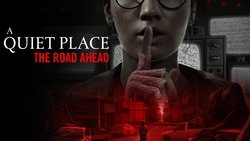
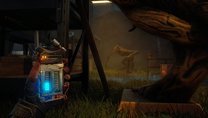







0 Comments
Want to join the discussion? Leave a comment as guest, sign in or register.
Leave a comment